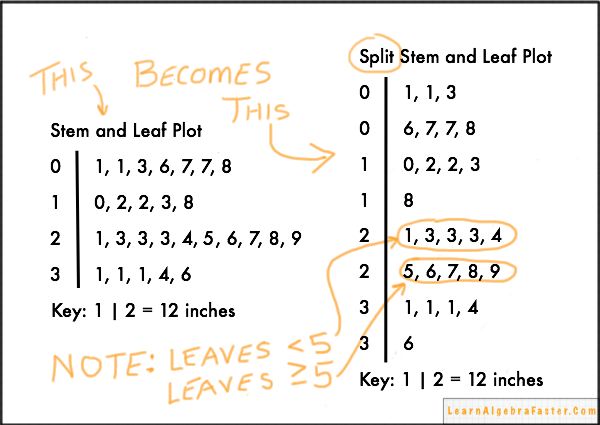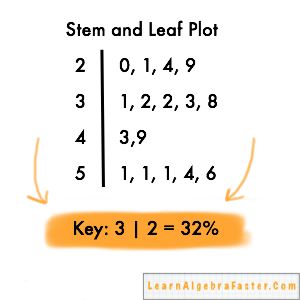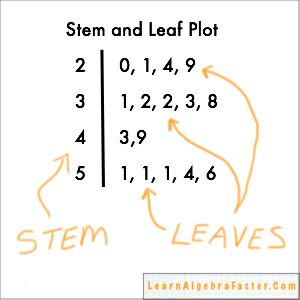Stem and Leaf Plots do a great job of organizing a list of numbers into an easy to read format. But what happens when there are a LOT of numbers in a set? That’s where the Split Stem and Leaf Plot comes in handy.
A Split Stem and Leaf Plot takes an ordinary stem and leaf plot and “splits” the stem section into two entries. This way, instead of having many numbers in one leaf section, it is split into two separate categories. The most common way to do this is for the split stems to group leaves 0-5 in the first section and the 6-9 leaves in the second section. Take a look at the picture below:
Note that both plots are equal. They represent the same data set. However, you will see that the split stem and leaf plot separates each stem into two stems. We place the smaller leaves (0, 1, 2, 3, and 4) on the first part of the split stem, and the larger leaves (5, 6, 7, 8, and 9) on the second split stem.
This makes the plot more appealing, as we don’t have the section from 20 – 29 extending far past the other leaf sections. You can use split stems at your own discretion, but it is very important to make sure the stems are separated consistently.


